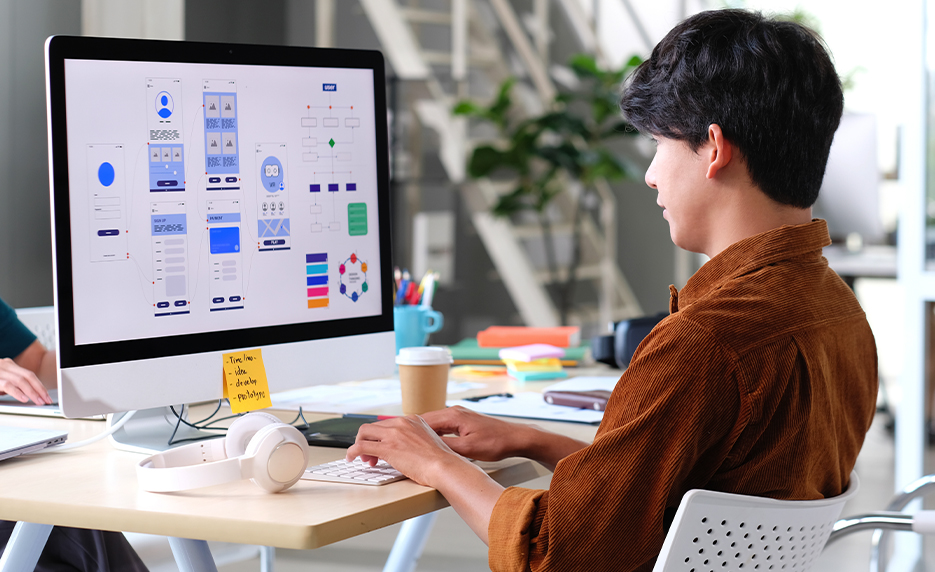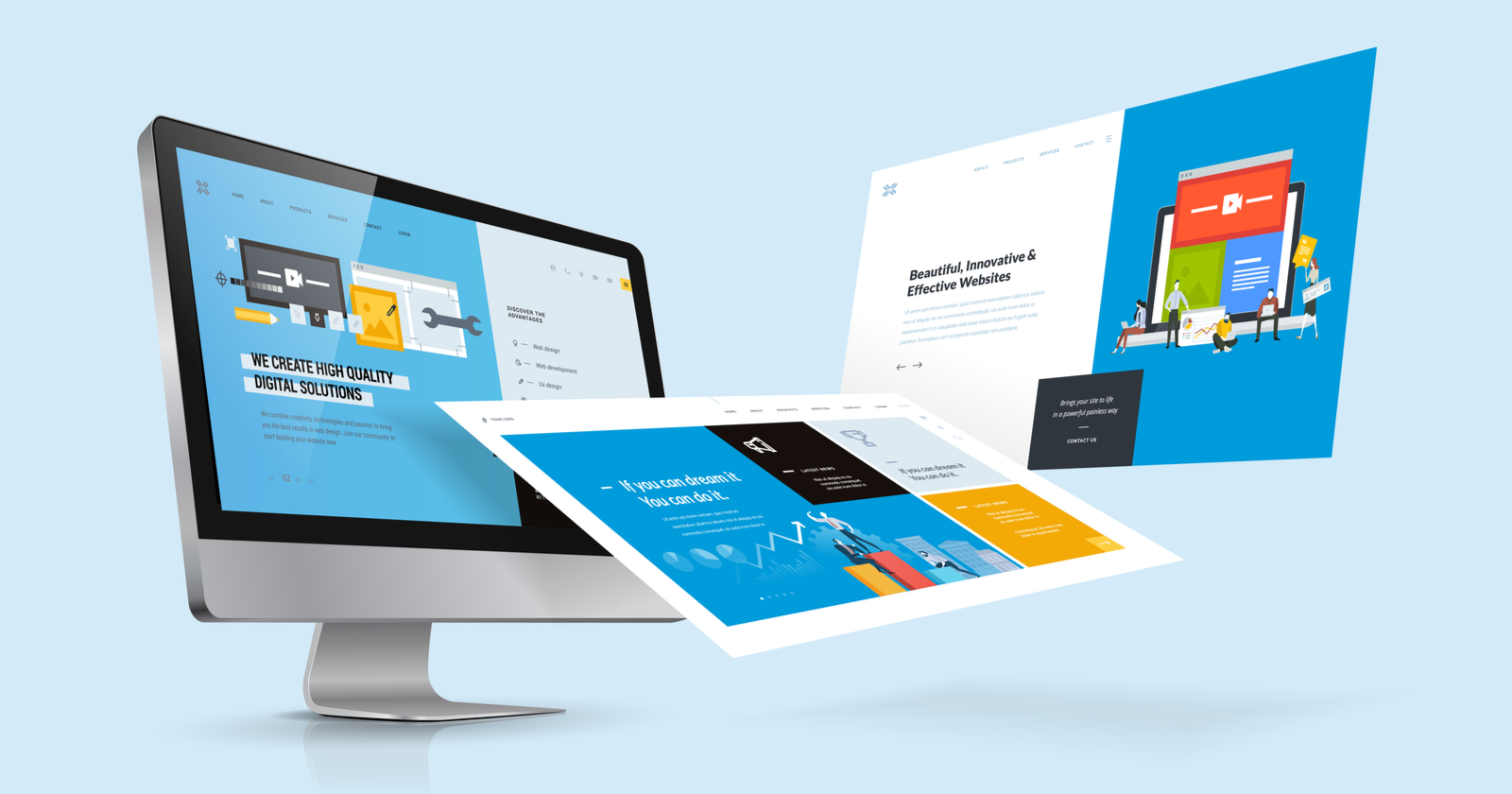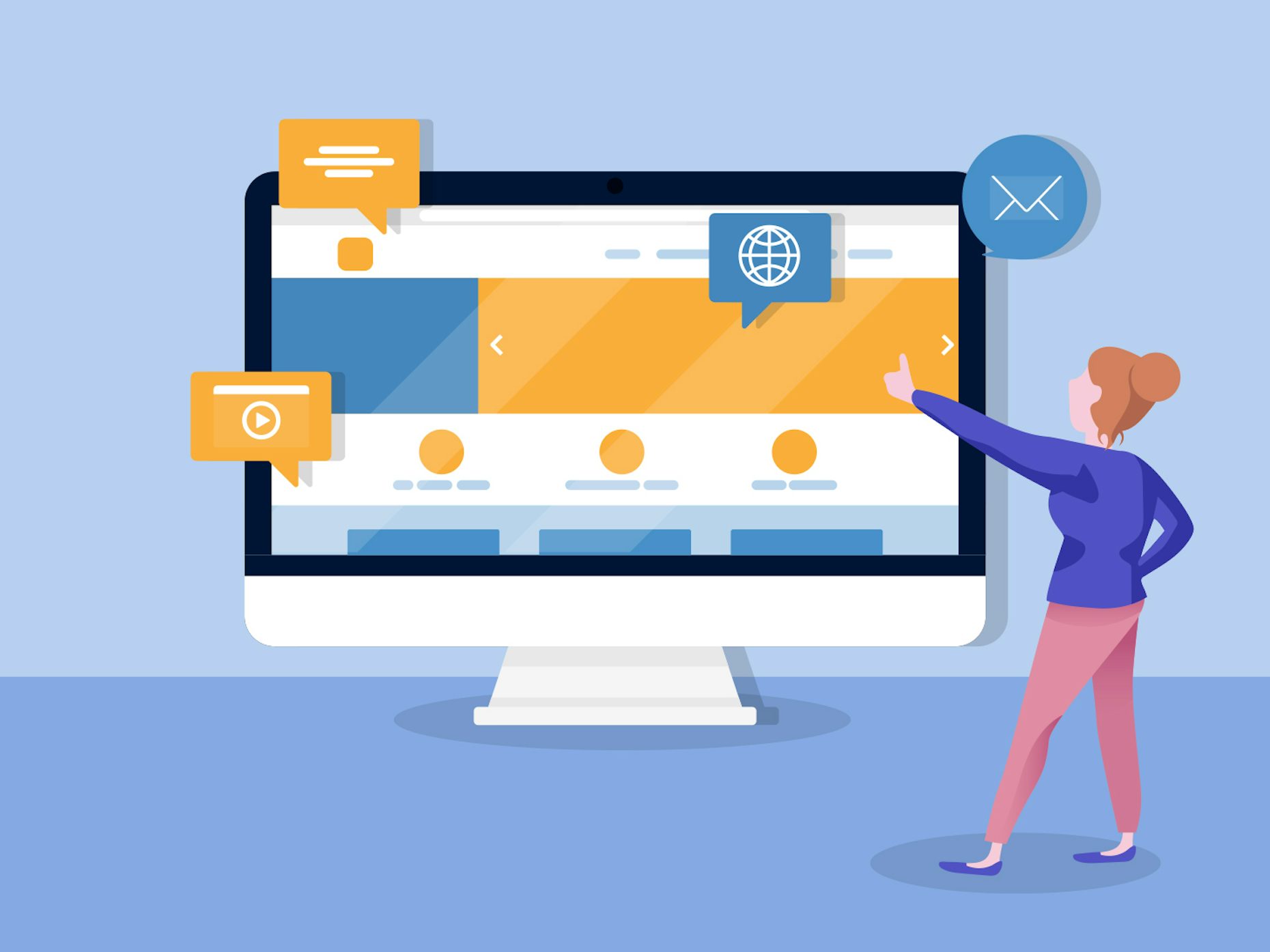All Categories
Featured
Table of Contents
- – Webpage Design (Article) - Further Learning - ...
- – Beginner's Guide: How To Learn Web Design At ...
- – $899 - Custom Mobile Friendly Website Design ...
- – Web Design Services By Freelance Website Desi...
- – Web Design Blog - Webdesigner Depot Webdesign...
- – Web Design & Seo By Acs - Syracuse Web Design...
- – $899 - Custom Mobile Friendly Website Design...
- – Boxcar Studio - Wordpress & Drupal Web Desig...
- – Web Design - Entrepreneur Tips and Tricks:
- – Web Design Ledger: Homepage Tips and Tricks:
- – Modern Website Designs - Best Web Page Desig...
Webpage Design (Article) - Further Learning - Khan Academy Tips and Tricks:
Quick summary Use and the utility, not the visual style, determine the success or failure of a website. Considering that the visitor of the page is the only individual who clicks the mouse and for that reason decides whatever, user-centric design has developed as a basic approach for successful and profit-oriented web design - web design frederick md.
and the utility, not the visual style, figure out the success or failure of a site. Given that the visitor of the page is the only person who clicks the mouse and therefore chooses whatever, user-centric design has actually ended up being a standard method for successful and profit-oriented web style. After all, if users can't use a function, it may also not exist.
g. where the search box ought to be put) as it has currently been carried out in a variety of articles; instead we concentrate on the approaches which, utilized appropriately, can lead to more sophisticated style decisions and streamline the process of perceiving presented info. Please observe that you might be interested in the usability-related short articles we've published before: Principles Of Good Site Design And Effective Website Design Standards, In order to utilize the principles properly we initially need to comprehend how users engage with sites, how they believe and what are the basic patterns of users' habits.
Beginner's Guide: How To Learn Web Design At Home - Medium Tips and Tricks:
Visitors look at each new page, scan some of the text, and click the first link that captures their interest or vaguely resembles the thing they're trying to find. In truth, there are big parts of the page they do not even take a look at. Many users look for something fascinating (or helpful) and clickable; as quickly as some appealing candidates are found, users click.
If a page provides users with top quality content, they are prepared to jeopardize the material with advertisements and the style of the site. This is the factor why not-that-well-designed websites with high-quality material gain a lot of traffic over years. Material is more vital than the design which supports it.

Users don't read, they scan. Notification how "hot" areas abrupt in the middle of sentences. This is common for the scanning procedure. Very simple principle: If a site isn't able to meet users' expectations, then designer stopped working to get his job done appropriately and the company loses money. The greater is the cognitive load and the less user-friendly is the navigation, the more willing are users to leave the website and search for alternatives.
$899 - Custom Mobile Friendly Website Design By Go Web ... Tips and Tricks:
Neither do they scan web page in a direct fashion, going sequentially from one website area to another one. Rather users satisfice; they select the first reasonable choice. As quickly as they discover a link that looks like it may lead to the objective, there is an extremely excellent possibility that it will be right away clicked.
It doesn't matter to us if we comprehend how things work, as long as we can utilize them. If your audience is going to act like you're designing signboard, then style terrific billboards." Users wish to be able to manage their browser and rely on the consistent data presentation throughout the site.
If the navigation and site architecture aren't instinctive, the number of enigma grows and makes it harder for users to understand how the system works and how to receive from point A to point B. A clear structure, moderate visual hints and easily recognizable links can assist users to discover their path to their objective.
Web Design Services By Freelance Website Designers - Fiverr Tips and Tricks:

Since users tend to check out sites according to the "F"-pattern, these three declarations would be the very first components users will see on the page once it is packed. The style itself is simple and instinctive, to understand what the page is about the user requires to browse for the response.
As soon as you've attained this, you can communicate why the system works and how users can gain from it. People will not use your web site if they can't find their method around it. 2. Don't Squander Users' Perseverance, In every project when you are going to provide your visitors some service or tool, try to keep your user requirements minimal.
First-time visitors want to, not filling long web kinds for an account they might never use in the future. Let users check out the site and discover your services without forcing them into sharing personal information. It's not affordable to force users to enter an e-mail address to check the function.
Web Design Blog - Webdesigner Depot Webdesigner Depot Tips and Tricks:
And that's what you desire your users to feel on your web site. The registration can be done in less than 30 seconds as the form has horizontal orientation, the user doesn't even require to scroll the page.
A user registration alone is sufficient of an impediment to user navigation to cut down on inbound traffic. Handle To Focus Users' Attention, As websites provide both fixed and vibrant material, some elements of the user interface draw in attention more than others do.
Focusing users' attention to particular locations of the website with a moderate use of visual components can help your visitors to receive from point A to point B without thinking of how it in fact is expected to be done. The less enigma visitors have, the they have and the more trust they can establish towards the business the website represents.
Web Design & Seo By Acs - Syracuse Web Design - Google ... Tips and Tricks:
4. Strive For Function Exposure, Modern website design are usually slammed due to their method of directing users with visually appealing 1-2-3-done-steps, large buttons with visual results etc. From the style perspective these components in fact aren't a bad thing. On the contrary, such as they lead the visitors through the site material in an extremely simple and user-friendly method.
The website has 9 main navigation options which are noticeable at the first glance. What matters is that the content is well-understood and visitors feel comfortable with the way they interact with the system.
com gets directly to the point. No cute words, no overemphasized statements. Rather a price: just what visitors are trying to find. An optimum solution for effective writing is touse short and concise phrases (come to the point as quickly as possible), use scannable layout (classify the content, use numerous heading levels, utilize visual aspects and bulleted lists which break the flow of uniform text blocks), usage plain and objective language (a promotion does not require to seem like advertisement; give your users some sensible and unbiased factor why they ought to use your service or remain on your site)6.
$899 - Custom Mobile Friendly Website Design By Go Web ... Tips and Tricks:
Users are hardly ever on a site to enjoy the style; furthermore, in many cases they are searching for the info regardless of the design - web design frederick md. Make every effort for simpleness rather of complexity. From the visitors' viewpoint, the best website design is a pure text, with no ads or further material obstructs matching exactly the question visitors utilized or the material they have actually been searching for.
Finch clearly presents the info about the site and offers visitors a choice of options without overcrowding them with unnecessary content. Not just does it assist to for the visitors, however it makes it possible to view the info provided on the screen.
Complex structures are harder to check out, scan, analyze and deal with. If you have the option in between separating two design sections by a visible line or by some whitespace, it's usually much better to use the whitespace option. (Simon's Law): the better you handle to offer users with a sense of visual hierarchy, the easier your content will be to view.
Boxcar Studio - Wordpress & Drupal Web Design ... - Ann Arbor Tips and Tricks:
The exact same conventions and rules need to be applied to all elements.: do the most with the least amount of hints and visual components. Clearness: all components should be created so their meaning is not ambiguous.
Conventions Are Our Friends, Standard design of site aspects doesn't result in a dull web website. It would be an use headache if all sites had various visual discussion of RSS-feeds.
comprehend what they're getting out of a site navigation, text structure, search positioning etc. A typical example from functionality sessions is to equate the page in Japanese (assuming your web users don't know Japanese, e. g. with Babelfish) and provide your use testers with a job to discover something in the page of different language.
Web Design - Entrepreneur Tips and Tricks:
Steve Krug suggests that it's much better to, however make the most of conventions when you don't. 10. Test Early, Test Often, This so-called TETO-principle ought to be used to every web style task as functionality tests typically supply into significant problems and problems related to a provided layout. Test not far too late, not insufficient and not for the wrong factors.
Some crucial points to keep in mind: according to Steve Krug, and screening one user early in the job is better than testing 50 near completion. Accoring to Boehm's very first law, mistakes are most regular throughout requirements and style activities and are the more pricey the later they are gotten rid of.
That means that you create something, test it, repair it and then evaluate it again. There might be problems which have not been found throughout the first round as users were virtually obstructed by other problems. functionality tests. Either you'll be pointed to the problems you have or you'll be pointed to the absence of significant style flaws which remains in both cases an useful insight for your task.
Web Design Ledger: Homepage Tips and Tricks:

This holds for designers also. After you've worked on a site for couple of weeks, you can't observe it from a fresh point of view any longer. You know how it is constructed and therefore you understand precisely how it works you have the wisdom independent testers and visitors of your website would not have.
It can be connected to other areas such as graphic design, user experience, and multimedia arts, but is more aptly seen from a technological perspective. It has ended up being a big part of individuals's everyday lives. It is difficult to imagine the Web without animated graphics, different styles of typography, background, videos and music.

During 1991 to 1993 the Internet was born. Text-only pages might be seen utilizing a simple line-mode internet browser. In 1993 Marc Andreessen and Eric Bina, developed the Mosaic internet browser. At the time there were numerous browsers, however most of them were Unix-based and naturally text heavy. There had been no integrated technique to graphic design aspects such as images or sounds.
Modern Website Designs - Best Web Page Designers Tips and Tricks:
The W3C was created in October 1994 to "lead the Internet to its complete capacity by establishing common procedures that promote its advancement and ensure its interoperability." This discouraged any one company from monopolizing a propriety internet browser and shows language, which could have altered the impact of the Internet as a whole.
As this has actually happened the technology of the web has actually likewise moved on. There have actually also been substantial changes in the method people utilize and access the web, and this has actually altered how websites are created.
Learn more about Lovell Media Group LLC or TrainACETable of Contents
- – Webpage Design (Article) - Further Learning - ...
- – Beginner's Guide: How To Learn Web Design At ...
- – $899 - Custom Mobile Friendly Website Design ...
- – Web Design Services By Freelance Website Desi...
- – Web Design Blog - Webdesigner Depot Webdesign...
- – Web Design & Seo By Acs - Syracuse Web Design...
- – $899 - Custom Mobile Friendly Website Design...
- – Boxcar Studio - Wordpress & Drupal Web Desig...
- – Web Design - Entrepreneur Tips and Tricks:
- – Web Design Ledger: Homepage Tips and Tricks:
- – Modern Website Designs - Best Web Page Desig...
Latest Posts
Web Design - Wikipedia Tips and Tricks:
Awwwards - Website Awards - Best Web Design Trends Tips and Tricks:
Sustainable Web Design: Home Tips and Tricks:
More
Latest Posts
Web Design - Wikipedia Tips and Tricks:
Awwwards - Website Awards - Best Web Design Trends Tips and Tricks:
Sustainable Web Design: Home Tips and Tricks: